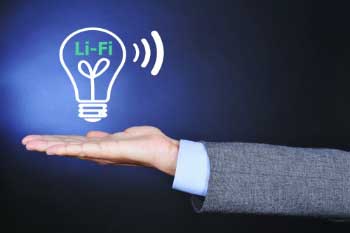What is Li-Fi technology and how does it work?
A new kind of wireless connection that uses light sources instead of microwaves to transmit data and is 100 times faster than Wi-FiWi-Fi, the technology that since its implementation in the early century has become a sort of oxygen that allows us to survive in an interconnected world, could be overcome soon. While its use will not disappear, at least for now, it will shift to the backgounrd in favor of technological development, which will soon present a new connection system: Li-Fi.

And what is Li-Fi technology? It is a new kind of wireless connection that uses light sources instead of microwaves to transmit data, hence its name: Light Fidelity, in exchange for Wireless Fidelity. Thus, LED bulbs in our home and office will work as a router just by placing a transmitter modulator.
Li-Fi technology vs Wi-Fi technology
Li-Fi is a great improvement compared to Wi-Fi at all levels. To begin with, the transmission speed is up to 100 times faster! Research being carried out by various technological research centers such as the renowned German Fraunhofer Institute or the Shanghai Institute of Technical Physics are already working with transfer rates of 1 Gbps (gigabit per second) and studies indicate that it could reach a speed of 10 Gbps, ie, multiply by a thousand the current speed of Wi-Fi.
Sustainability: lower cost and higher efficiency

But the advantages are not only in speed. It is estimated that in the near future we will be able to transmit data through solar energy, which will facilitate access to people without internet and with limited electricity resources. The operation of the Li-Fi technology will save costs as in homes and, above all, workplaces, it could do without electronic devices such as routers, modems, signal repeaters, wave amplifiers and antennas. These devices, which are currently connected to the power grid 24 hours a day, 7 days a week, would stop consuming electricity and its function it would be replaced by a LED bulb, which in most cases is already on during work time, so would not mean an extra cost.
Security against attacks
On the other hand, being necessary to be in direct contact with the LED light beam emitter, computer security is strengthened. Only devices illuminated by the same light bulb can be interconnected with each other, eliminating attacks or unauthorized entry attempts from devices outside of our light spectrum.
A bright, safer, faster and more efficient solution to optimize our connection with the world; is it the beginning of the end of Wi-Fi? Tell us your opinion by participating with your comments.
Sources: Bopoulsen, El País, The Venture Spain and Tecnología El País.

